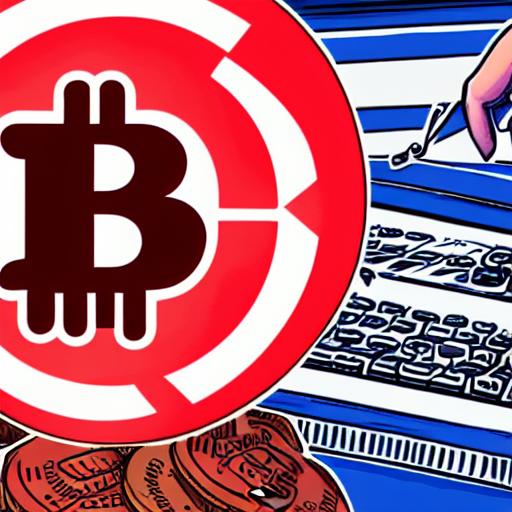Binance’s Changpeng Zhao accuses FTX’s Sam Bankman-Fried of initiating trades to destabilize the industry in a group chat with other crypto leaders.
Sam Bankman-Fried, the founder of troubled cryptocurrency exchange FTX, received a panicked text message from Changpeng Zhao, the CEO of rival exchange Binance, the day before FTX declared bankruptcy.
Mr. Zhao was worried that Mr. Bankman-Fried was directing cryptocurrency trades that might cause the sector to collapse. On Nov. 10, Mr. Zhao messaged Mr. Bankman-Fried and other cryptocurrency executives, saying, Stop now, don’t do more harm. The more harm they cause right now, the more time in jail.
After an $8 billion hole in the exchange’s accounts was revealed by a run on deposits, FTX and its sister hedge fund, Alameda Research, had just collapsed. As businesses connected to FTX teetered on the verge of insolvency, the implosion sparked a crypto crisis and raised doubts about the industry’s future as a whole.
The roughly a dozen group texts exchanged between Mr. Zhao and Mr. Bankman-Fried on November 10 reveal that prominent crypto leaders were concerned that things might get worse. At least three top executives from competing companies were exchanging messages in a group on the encrypted messaging app Signal in their frantic communications, which provide a glimpse into how business is conducted in the industry on a behind-the-scenes basis.
The texts also demonstrate that business executives were well aware that the actions of a single company or changes in the value of a single virtual currency could cause the entire sector to become unstable. The discussions grew tense as Mr. Bankman-Fried and Mr. Zhao traded insults.
Mr. Zhao had agreed to buy FTX earlier in the week and save the exchange, but he later backed out of the deal. He seemed certain that FTX wouldn’t survive in the texts from November 10 and worried that it might bring the rest of the industry down with it. Two coins’ values had collapsed during a crypto crash in May, causing an industry-wide meltdown and driving several well-known companies into bankruptcy.
In the texts from November 10, Mr. Zhao accused Mr. Bankman-Fried in particular of using his hedge fund to lower the price of Tether, a so-called stablecoin whose value is intended to stay at $1.
Tether, which is issued by a business with the same name, is a key component of cryptocurrency trading globally and is frequently used by enthusiasts of digital assets to complete transactions. Insiders in the sector have long feared that if Tether’s price dropped, it could set off a chain reaction that could bring the sector to its knees. (Tether didn’t actually lose its $1 peg in the end.)
A Binance spokeswoman declined to respond to questions about the texts. Mr. Bankman-Fried, 30, called Mr. Zhao’s claims “absurd” in a statement.
To his knowledge, neither he nor Alameda have ever attempted to purposefully depeg Tether or any other stablecoins. The price of Tether would not be significantly affected by trades of that size. Over the past year, he has made a lot of mistakes, but this is not one of them, he said.
Tether’s actions have demonstrated its resilience to attacks, a company spokeswoman said in a statement, adding that FTX’s actions don’t reflect the ethos and commitment of an entire industry.
Customers rushed to withdraw deposits from FTX, a platform where people could buy and sell digital currencies, at the beginning of last month, in part in response to tweets by Mr. Zhao that cast doubt on the company’s financial stability. The Justice Department and the Securities and Exchange Commission began looking into whether or not FTX had broken the law by using its customers’ money to support Alameda after it quickly went out of business.
The Justice Department is investigating whether Mr. Bankman-Fried engaged in market manipulation by making trades that led to the collapse of two well-known cryptocurrencies in the spring.
Tether may also be susceptible to a collapse, according to critics of the crypto market who have been stating this for years. Tether has long argued that its stablecoins are backed by cash and other conventional assets and that, in an emergency, all of its users could exchange their coins for dollars to the same value. Regulators, however, have in the past charged Tether with lying about the status of its reserves, casting doubt on the currency’s dependability.
Mr. Zhao brought up a $250,000 trade by Alameda in one of the messages sent to the group chat on November 10 that he claimed was made to undermine Tether. On the blockchain, a public ledger of cryptocurrency transactions that anyone can access, the transaction was visible.
Mr. Bankman-Fried didn’t seem surprised by Mr. Zhao’s accusations. Asking how is Zhao treating stablecoins? Mr. Bankman-Fried further said that $250k in USDT trading cannot cause it to depeg. Mr. Zhao replied that while he didn’t believe a trade of that magnitude would be successful in destroying Tether, it could still result in issues.
Mr. Zhao said, his honest recommendation is to stop doing everything.
Source link








